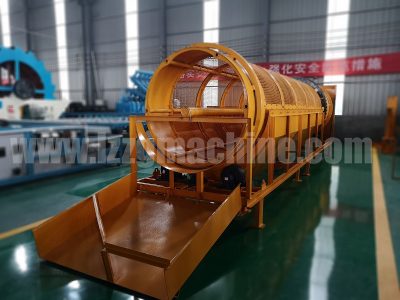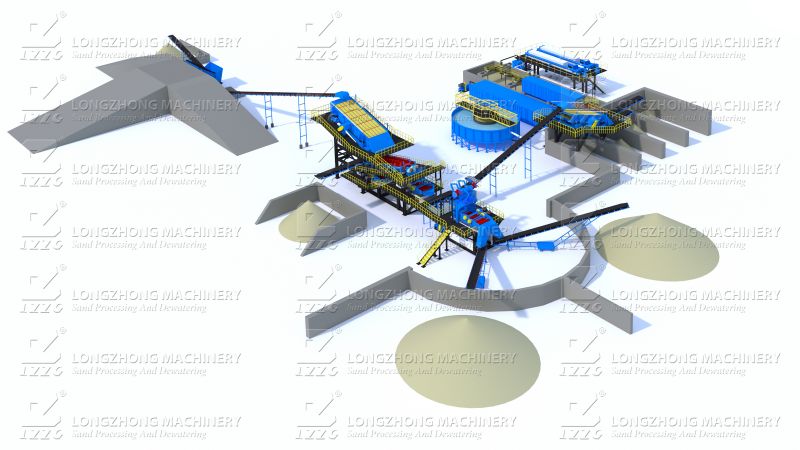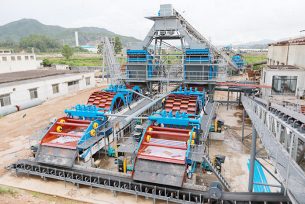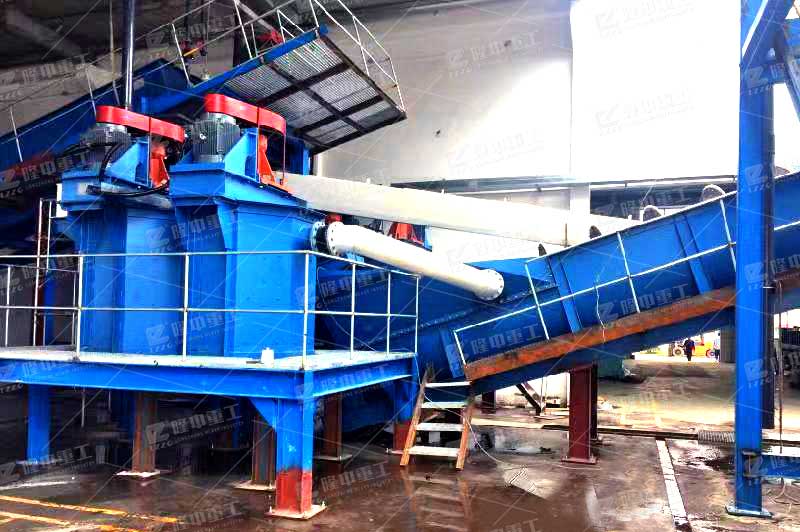Laterite nickel ore screening equipment
 August.10,2020
August.10,2020
Trommel screen structure and problems encountered in laterite nickel ore
The working part of the circular vibrating screen is cylindrical, and the motor drives the screen shaft through gear transmission to make the screen body rotate at low speed around the cylinder axis. The material is fed from the hopper, the fine material passes through the sieve holes on the surface of the screen body, and the coarse material is discharged from the end of the screen body through the big stone chute.
According to the user’s field experience, ordinary cylindrical screens often encounter the following problems
Laterite nickel ore itself. High viscosity, poor flow performance, it is easy to stick to the cylindrical screen feed hopper, causing the feed hopper to block the material; at the same time, the fine ore after screening often sticks to the side plate of the tank, increasing the equipment load In severe cases, it will wear and even damage the equipment.
When the material is wet and highly viscous, the material will form agglomerates when it enters the sieve body, or even block the sieve holes in severe cases, the machine must be shut down to clean the material to reduce the screening efficiency. At the same time, materials block the front sieve of the screen body, which will cause poor feeding and easily block the feed inlet. During on-site production, special personnel must be equipped to guard and clean the feed hopper, which increases the labor load of on-site operators.

Improved laterite nickel ore screening equipment
The optimized laterite nickel ore drum screen adopts chain drive design. An idler roller is set below the screen body to bear the weight of the screen body, and sprocket wheels are installed on the reducer and the screen body, and chains are used to drive the circular vibrating screen to run. Because the screen shaft is eliminated, the impact of the material on the screen body is shared by the material receiving area at the front of the screen body, and a fixed area will not be damaged due to bending fatigue. In addition, compared to the original motor-reducer-sieve shaft gear transmission, the chain transmission has more stable performance under impact load, longer service life, and more convenient maintenance. The shaftless chain drive design solves the problem of frequent bending and breaking of the shaft of the ordinary circular vibrating screen, which leads to downtime for maintenance.





